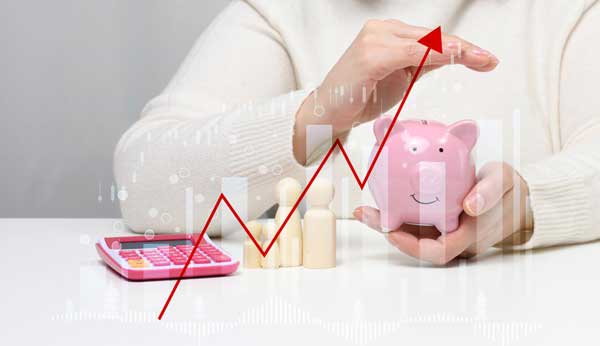Inflation, the rapid expansion of the money supply, has long been promoted as a means to stimulate economic growth and reduce unemployment. However, the truth behind this monetary policy is far from what politicians and bureaucrats claim. In this article, we will delve into the uncensored reality of inflation and expose how it actually impoverishes the poor and middle class, exacerbates wealth inequality, empowers the government, and sets the stage for an economic crash. Join us as we uncover the hidden agenda behind monetary inflation and its impact on society.

The Illusion of Monetary Inflation and Its Economic Consequences
Central banks have been flooding the global economy with newly created money for decades, under the guise of stimulating growth. However, this policy proves to be economically destructive. We’ll explore how the expansion of the money supply fails to generate real wealth and how it separates wealth from the monetary value. Discover the distinction between money and actual goods and services that form the foundation of a prosperous economy.
Wealth Redistribution and Unearned Gains: Who Benefits from Monetary Inflation?
Contrary to popular belief, newly created money does not enter the economy uniformly. Instead, it flows through specific channels, benefiting governments, businesses, or individuals selectively. We’ll uncover how this wealth redistribution occurs and how those who receive new money gain an unearned advantage over the rest of society. Explore the detrimental effects of this process, leading to relative impoverishment for the majority.
Covert Taxation: The Disguised Impact of Monetary Inflation
Unlike traditional forms of taxation, a monetary inflation operates as a covert tax. Governments exploit the creation of new money to fund their spending, diverting wealth and resources to their chosen recipients. Meanwhile, this process exerts upward pressure on prices, eroding the purchasing power of the general public. We’ll examine how inflation functions as a hidden tax, favoring the government and perpetuating wealth inequality.
The Empowerment of Governments and Erosion of Public Consent
Monetary inflation enables governments to expand their powers beyond what they could achieve through traditional taxation. By relying on the creation of money, politicians avoid the unpopularity associated with raising taxes directly. However, this strategy undermines public trust and consent. We’ll analyze the implications of governments funding their spending through inflation and the potential consequences of this unchecked power.
Inflation’s Impact on Wealth Inequality and the Enrichment of the Rich
Among the various beneficiaries of money creation, the rich reap the greatest rewards. Discover how central banks’ artificially low interest rates enable the wealthy to access cheap credit, which they use to purchase assets such as real estate, equities, and precious metals. We’ll explore the consequences of elevated demand for these assets, which primarily benefit the upper class, exacerbating wealth inequality.
The Destructive Nature of Monetary Inflation and Economic Distortions
Low interest rates fueled by monetary inflation act as false signals, leading to overconsumption and overexpansion by individuals and businesses. This economic distortion encourages speculative ventures and discourages saving.
Inflation’s Burden on the Middle Class and the Poor
While the wealthy may benefit from asset inflation, the middle class and the poor bear the brunt of rising prices. We’ll explore how inflation erodes the purchasing power of their wages and savings, making it harder for them to meet their basic needs and achieve financial stability. Learn about the disproportionate impact inflation has on vulnerable communities and the widening wealth gap.
Inflation’s Role in Creating Boom-Bust Cycles and Economic Crises
Monetary inflation sets the stage for boom-bust cycles and economic crises. The expansion of the money supply leads to artificial booms, creating unsustainable growth and speculative bubbles. Eventually, these bubbles burst, resulting in economic downturns and financial instability. We’ll delve into the connection between inflation, malinvestment, and the recurring cycles of economic turmoil.
The Fallacy of Inflation as a Solution to Government Debt
Inflation is often touted as a tool to address government debt. However, this approach is deceptive and only exacerbates the problem. We’ll explain how inflation devalues the existing debt burden but also erodes the value of savings and investments. Ultimately, it harms individuals and undermines the long-term stability of the economy.
The Need for Monetary Responsibility and Alternative Solutions
It is crucial to question the reliance on inflation as a policy tool and explore alternative solutions for economic stability and wealth distribution. We’ll discuss the importance of monetary responsibility, sound fiscal policies, and market-driven approaches. Discover viable alternatives to inflation that prioritize sustainable economic growth and fair wealth distribution.
Conclusion
Inflation, far from being a benign economic force, serves the interests of politicians and the wealthy elite while burdening the middle class and the poor. By understanding the truth about inflation, its consequences, and the hidden agenda behind monetary expansion, we can advocate for responsible monetary policies that promote economic stability, reduce wealth inequality, and protect the well-being of all members of society. It is time to unveil the real story behind inflation and work towards a more equitable and prosperous future.
